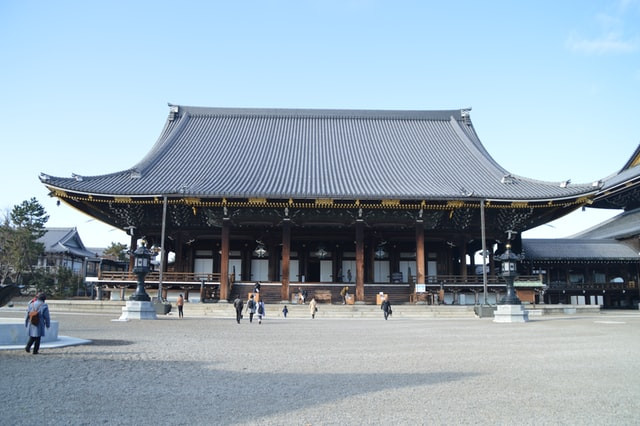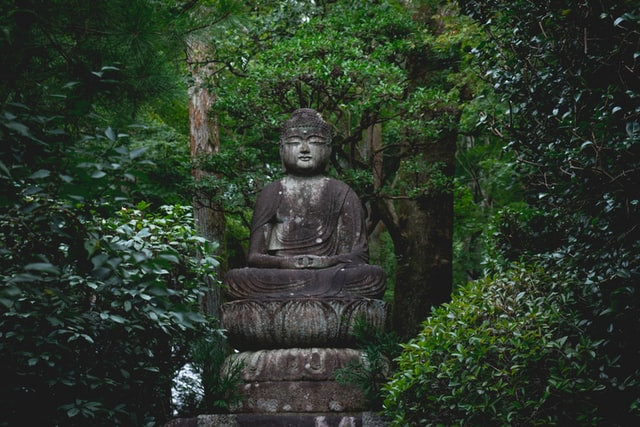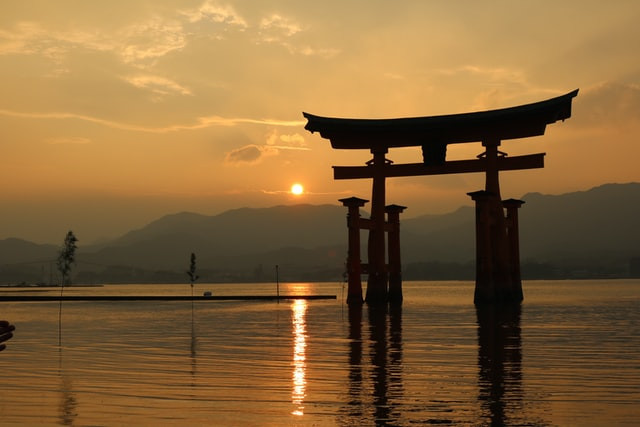Two religions are dominant in Japan; Shintoism and Buddhism. Japan has a deep history connected to the two that shaped and molded the nation into what it is today, influencing Japanese aesthetics, culture, and so on. These two religions continue to play a part in the Japanese way of life.
Table of Contents
Major religions in Japan
Shintoism and Buddhism are the two most dominant religions in Japan that, throughout the ages, influenced the beliefs, aesthetics, and way of life of the Japanese. Currently, though the two are distinct religions, they are both practiced by many simultaneously. In 2018, Shintoism has the largest number of adherents at about 87.2 million (about 69% of the population in 2018), followed closely by Buddhism at about 84.3 million (about 67%) , and Christianity at 1.9 million (1.5%) while other religions number to 6.2%.
※Official Statistics of Japan, “Survey on Religion - Reiwa 0”
The total percentage goes beyond 100% because of the populations practicing Buddhism and Shintoism at the same time. The two belief systems are greatly compatible with one another that allowed for the coexistence and even melding of religions. People who practice both religions experience festivals from Buddhist or Shinto origin, attend funerals which are commonly held with Buddhist practices, and marriages infused with Shinto culture. This alone speaks volume of the interaction between the two dominant religions in Japan.
Though it wasn't as deep rooted as Shintoism and Buddhism, Confucianism also was something relevant in Japanese history. Both as a religion and a philosophy, there are many traces of Confucianism's help towards the development of morals and ethics in Japan. An example is its part in the tripartite blending of beliefs among Shintoism, Buddhism, and Confucianism in the creation of Bushido, or "way of the warrior" practiced by samurai.
This article will focus on the two major religions: Shintoism and Buddhism.
Writer's Pick
Shintoism in Japan

One of the unique features of Shintoism is its lack of binding ideology.
Shintoism is a 2000-year-old religion in Japan that means “the way of kami”. Shintoism can be described as a collection of practices of how the Japanese interact with nature via the “spirits” or “divine power” - known as “kami”. Shintoism is animistic, meaning nature, things, places, and animals can be considered “kami” themselves. The ancient Japanese language had no specific word for "nature", simply because they did not see the environment as a collected inanimate setting but as separate entities that are "kami".
Shintoism started out as scattered practices of how the early Japanese understood the environment, and it has no founder nor sacred texts. How to pray for rain, for good weather, for harvest, which animal is sacred - these would be answered as the religion was shaped after generations of molding. Since there is no sacred text in Shintoism, the beliefs are passed via daily interactions, through public and private prayers to shrines, events, and festivals rather than a weekly attendance or readings. By large, Shintoism is deeply connected to nature, specifically agriculture that supported the populations of Japan.
The Shinto pantheon revolves around the creator deities, Izanagi and Izanami, and their daughter, the sun goddess Amaterasu. Much like the god-emperor culture of the old western kingdoms and empires, the ancient Japanese nobility is believed to have descended from the lineage of Amaterasu, giving them the divine right. The emperor was also recognized as the highest authority in Shintoism. The government was given the responsibility of managing rituals before the separation of state and religion, giving the impression that the government is chosen by the “Kamis” to rule.

Shintoism itself is deeply engraved in Japanese practices, and during the late 19th century until the first half of the proceeding century, Shintoism was the officially recognized state religion in Japan. After World War 2, Shintoism was separated from the State due to its perceived ties with the military and was thus removed from its official position, yet the religion still stands as influential to the Japanese.
※ JSTOR, "The Shinto Directive"
Shintoism, from a religion that mainly circles on agriculture, was also effective for unification and nationalism and was later improved by incorporating Buddhist teachings, which melded well towards the current religious situation in Japan in which people often have both beliefs.
Shinto Practices in modern day Japan
The influence of Shintoism in modern Japan can be visibly observed in the Japanese aesthetics and culture. Religious dances and ceremonies are traditionally performed as ways of praising the Shinto pantheon, and there are various festivals honoring religious events that are done yearly, especially seasonal ones such as those related to harvest. Visiting shrines is a big event at the start of the new year to pray for good luck.
Shintoism can be described as a relationship with nature, and combined with its lack of binding ideology, allows the simultaneous practice with Buddhism. In fact, many adherents think of Shintoism as more of the Japanese way of life than a religion.
Buddhism in Japan

Buddhism was founded by Prince Siddartha Gautama, the Buddha in the 6th century B.C.E., and became a popular belief in Asia. Buddhism was mainstream in Korea and especially China before it was brought to Japan in the 6th century C.E. Buddhism, at the start, had difficulties reaching the masses in Japan. Not everyone was literate, and thus couldn’t read the foreign texts as the scriptures had foreign origins. The problem was later solved when scholars deciphered the texts.
Buddhism and Shintoism were compatible and had intersecting beliefs about nature; moreover, they had no major conflict in dogmas. Shintoism was a set of beliefs engaged with the people’s relationship with nature and the “Kamis”, while Buddhism was about “Nirvana”, self-cultivation, and the afterlife. The perception towards Buddhism then was often associated with gaining supernatural abilities, which was a very attractive topic.
Buddhism scriptures expanded the religious beliefs of the Japanese but did not attempt to completely overtake the traditional Shinto teachings. Instead of replacing Shintoism, Buddhist scriptures were interpreted to be another view of Shinto beliefs. During the amalgamation of religious beliefs in Japan, it constructed the view that Shintoism’s “Kamis” and the Buddhist “Devas” or gods to be similar.
In the 8th century, Buddhism became the state religion of Japan. Buddhism empowered the already established Shintoism, integrating itself to be used by the government to promote its importance to the populace, with the Japanese Emperor at the top-most symbol of authority. This remained true until the rise of the samurai class and the rise of Shoguns.
Buddhism has many favorable features that were admired and followed. Though most religions follow the tenets of doing good, Buddhism stresses the importance of self-cultivation and meditations in attaining one’s desires. Discipline was also especially liked by the samurai class for its connection to their must followed “Bushido”, or “Way of the Warrior”. There were many things that could hinder a samurai from being an ideal warrior, but Zen Buddhism was believed to help in its attainment.
※ StMU History Media, "Zen Buddhism and the Samurai’s Key to Bushido"

Buddhism has branches of beliefs, though nurturing towards the same goal, they have different methods of its attainment. Some of the largest branches are the “Theravada” and “Mahayana”. “Theravada” means “Teachings of the Elders”, while “Mahayana” means the “Greater Vehicle”. The latter, “Mahayana” was designed to be more far-reaching, and accommodating was the branch that reached Japan, deeply establishing itself. Many if not most Buddhist sects in modern Japan came from or were influenced by monk Shinran and monk Nichiren. The former established the True Pure Land Sect while the latter established Nichiren Buddhism, both of which are still popular today along with others.
Buddhist Practices in modern day Japan
Buddhism in modern Japan can take different forms. For example, the following are examples of Buddhist influence;
-
Funeral rituals
-
Festivals and other events often correlating with hospitals
-
Buddhist related items
Funerals in Japan are held, infused with Buddhist teachings during which it would not be uncommon to see a monk reciting sutras and leading the rite. Small altars are also visible in Japanese houses used to paying respect to their ancestors. Other than the large number of temples scattered in the country, there are also Buddhist items like the Daruma doll which is also a good souvenir. There are also various events like the “Bon” festival and holiday, or “festival of the dead”.
The cumulative influence of Buddhism is blatant and would only become more obvious as one experiences Japan.
Summary

Throughout Japanese history, religion influenced culture, aesthetics, and laid down political maneuvers that not only established ancient societies, but its effects are also felt today. In the same manner, history also influenced Shintoism and Buddhism into what it is today. The rituals and practices started a thousand years ago are still followed today, because, for modern Japan, religion is something that is already patterned into daily activities.
When foreigners live in Japan they may be able to recognize that the cleanliness and thankfulness shown by Japanese people might be influenced by religions. If one wants to truly feel the aesthetics and the grand structures erected in honor of “Kamis” and Buddha, Japan has preserved many famous shrines and temples scattered across the country.














.jpg)



















